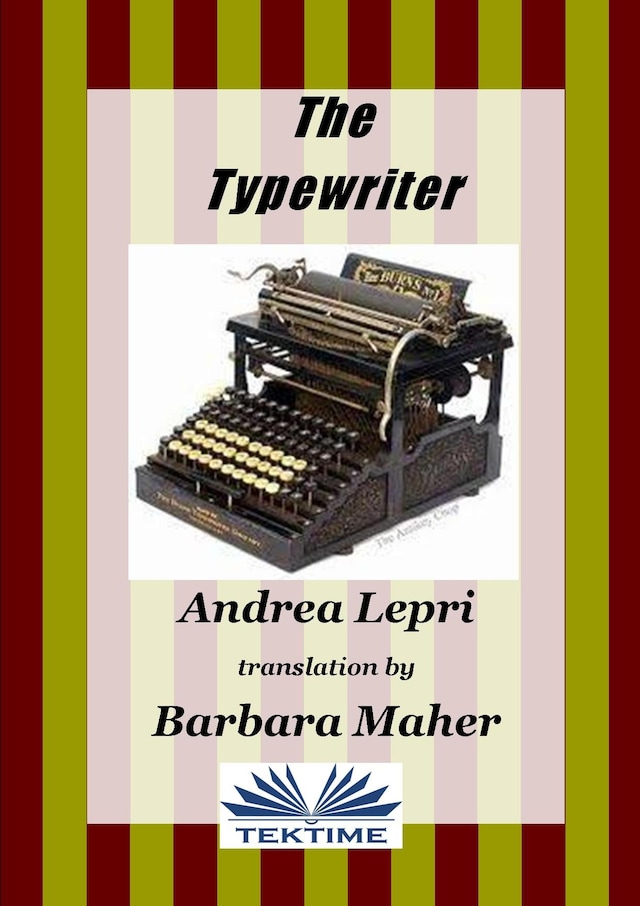
The Typewriter
Tietoa kirjasta
A cursed typewriter. A man sitting on the railing of a balcony. The protagonist of his novel. Two lives that weave together similar experiences, two paths in precarious equilibrium.
Franco is sitting comfortably on the railing of the balcony of his house, on the third floor of the building where he lives. As if it were nothing unusual, he is reading the pages of the novel he has just finished writing and then lets them fall below, among the crowd of onlookers who have gathered to watch him. Believing that he is about to jump off, someone has called for help, and now a firefighter is coming up towards him with the mechanical ladder while in the distance you can hear the sirens of the police and ambulance. Regardless of all this, Franco keeps reading, incredulous. He did not believe that he could write a novel, and it seems impossible that he was able to finish it before the punishment arrived. Writing it, in fact, has cost him a lot: to succeed he has followed a path that led him to commit unspeakable acts. His wife is running to him to try to save him, in fact talking to him on the phone she has guessed that Franco has found her typewriter in the cellar, that machine that is said to be cursed. Meanwhile, he reads and remembers... Franco is convinced that love is the force that makes the world go round. Due to an accident at work, he is forced to spend the summer holidays alone, at home, convalescing. When they deliver the results of the tests, he will be able to leave and join his family on vacation, his wife and two children. After a long time, he finds himself having to spend an extended period in complete solitude, but he is no longer used to it and becomes very bored. While rummaging in the basement he finds an old typewriter and decides that he will write a novel to pass the time. It is the story of Mr. Carpetti, a lonely man who, having lost his love for life, is dying of a non-existent illness. When the doctor reveals that he has only a few months to live, he embarks on a journey that will lead him to change profoundly. During this journey he will meet a person who will take him with him on an incredible adventure that will lead him back to believing in the values of love. This person is Walter, a missionary doctor who is the victim of an international plot that has as its object the sale of expired medicines to third world countries. It is he who will teach Carpetti the love for life, for people and for things. But the machine that Franco is using to write this story has something strange about it: it is believed to have belonged to a crazy writer, a man who after writing a single masterpiece committed suicide, leaving an accusatory letter against the machine itself where he calls it cursed. As Carpetti goes through experiences of various kinds and completes his own journey towards salvation, Franco identifies himself more and more with Carpetti so as to tell the story it in the best way possible. Meanwhile, he establishes a very special relationship with the typewriter, he does not recognize some pages of the novel as his own and thinks that the machine wrote them. Although he fears that this will drive him crazy definitively, he feels he must write at all costs because when he leaves the typewriter he is seized by strange sensations, anguish, physical pain. Some recurring illnesses make him believe that he is seriously ill, that he has a disease that progresses day by day and that will soon lead him to die. As a result, he carries out in his mind the same experiences as Carpetti in a reverse journey and arrives at discovering the dark part of himself and questioning everything he believes in. The two stories take place in parallel and overlap each other, while the two key characters proceed on inverse paths. At a certain point, however, the two stories intertwine: both perform an act of violence on the same girl, Chica, a figment of Franco's imagination. That same act will give the
PUBLISHER: TEKTIME
 Andrea Lepri
Andrea Lepri 229 Sivua
229 Sivua